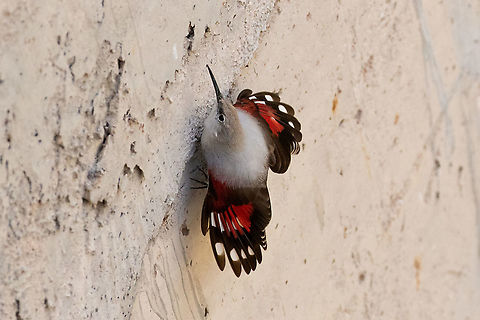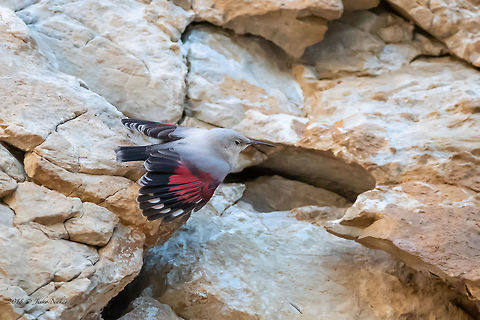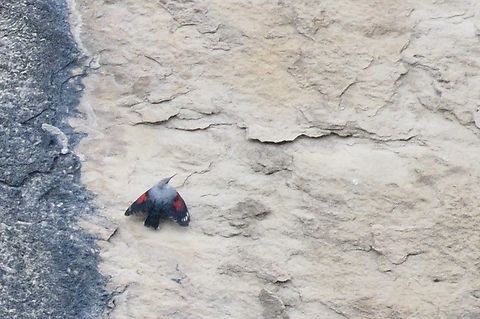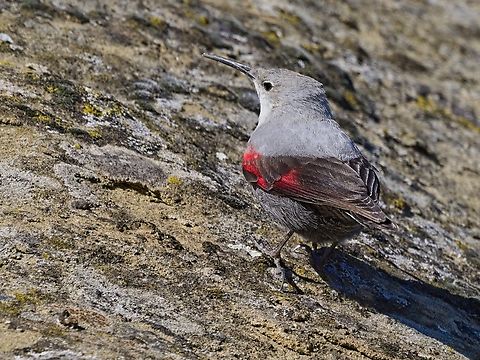
Appearance
The wallcreeper is a 15.5–17-centimetre (6.1–6.7 in) long bird, with a mass of 17–19 grams (0.60–0.67 oz). Its plumage is primarily blue-grey, with darker flight and tail feathers. Its most striking plumage feature, though, are its extraordinary crimson wings. Largely hidden when the wings are folded, this bright colouring covers most of the covert feathers, and the basal half of the primaries and secondaries. The subspecies T. m. nepalensis is slightly darker than the nominate race.
Naming
The genus name Tichodroma comes from the Ancient Greek teikhos "wall", and dromos "runner". The specific muraria is Medieval Latin for "of walls", from Latin murus, "wall". Alternatively, the wallcreeper is named the red-winged wall creeper.
Distribution
A bird of the high mountains, the wallcreeper breeds at elevations ranging between 1,000 and 3,000 metres (3,300 and 9,800 ft). It is largely resident across its range, but is known to move to lower elevations in winter, when it is occasionally found on buildings and in quarries. Birds have wintered as far afield as England and the Netherlands, where one spent two consecutive winters between 1989 and 1991 at the Vrije Universiteit in Amsterdam. The species is resident across much of the Himalayas, ranging across India, Nepal, Bhutan and parts of Tibet and also as a winter-visitor in Bangladesh.
Behavior
This species can be quite tame, but is often surprisingly difficult to see on mountain faces. While it may be confiding in the breeding and non-breeding seasons, and vagrant birds especially are extremely tame, they will still hide when they are aware of being watched, and will hesitate before entering the nest and even take roundabout routes towards the nest during prolonged observations.Wallcreepers are territorial, and pairs vigorously defend their breeding territory during the summer. During the winter the wallcreeper is solitary, with males and females defending individual feeding territories. The size of these feeding territories is hard to estimate but may comprise a single large quarry or rock massif; or, alternatively, a series of smaller quarries and rock faces. Wallcreepers may travel some distances from roosting sites to feeding territories. They have also been demonstrated showing site fidelity to winter feeding territories in consecutive years
References:
Some text fragments are auto parsed from Wikipedia.
Wikipedia